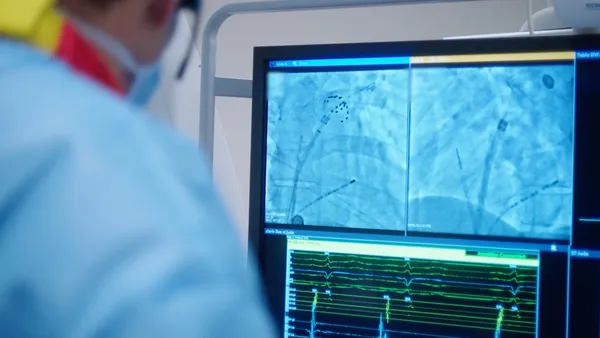Dive Brief:
-
A study published in JAMA Cardiology on Wednesday of Abbott’s left ventricular assist device (LVAD) HeartMate 3 suggests it is unnecessary to group patients by transplant eligibility.
-
Today, heart failure patients are treated differently depending on whether they need an LVAD as a bridge to a transplant or for permanent support. But the secondary analysis of the MOMENTUM 3 trial, which involved 515 patients with HeartMate 3 and 505 patients with HeartMate II, indicates such classification of patients is not needed, as event-free survival appears comparable in each group.
-
"Patients with medically refractory heart failure can be successfully treated under a single preimplant strategy with the goal of extending survival and improving quality of life," the authors concluded.
Dive Insight:
The grouping of patients by transplant eligibility dates back to the early days of LVADs. FDA approved the first device as a bridge to transplant, not as a permanent heart failure treatment. However, later studies found LVADs are suitable for use as long-term treatments in patients ineligible for transplant. Since then, LVADs have been approved and reimbursed for use in one group or the other.
A study comparing Abbott’s HeartMate 3 to its predecessor has raised doubts about whether that is the right approach. The primary analysis of the study, published last year in The New England Journal of Medicine, linked HeartMate 3 to improved outcomes.
The evidence questioning the grouping of patients by transplant eligibility comes from a prespecified secondary analysis of the HeartMate 3 data. In the bridging patients who received HeartMate 3, the two-year rate of survival free of disabling stroke and reoperation was 76.8%. The figure for patients deemed to need HeartMate 3 permanently was 73.2%.
In light of the similar outcomes in the two groups, the authors said “use of categorizations based on current or future transplant eligibility should be abandoned in favor of a single treatment indication.”
Allen Anderson, a cardiologist at Northwestern University, unpacked the potential implications of the conclusion in an editorial to accompany the research paper. In doing so, Anderson highlighted some of the inefficiencies created by the division of heart failure patients.
“Separate clinical trials for each new LVAD were conducted for each implant indication, adding expense and delays to pump development,” Anderson wrote. “Patients with LVADs continue to be at risk for considerable complications, such as stroke, bleeding and infection. Further pump development will depend in part on rational, efficient and economical clinical trial design.”
In the future envisaged by Anderson, clinical trials would recruit all heart failure patients, rather than limit enrollment to either people who need a LVAD temporarily or permanently. Applied to clinical practice, the single indication could enable physicians to sidestep difficult upfront decisions about transplants and pumps, choosing instead to start a patient on LVAD and see how they progress.










